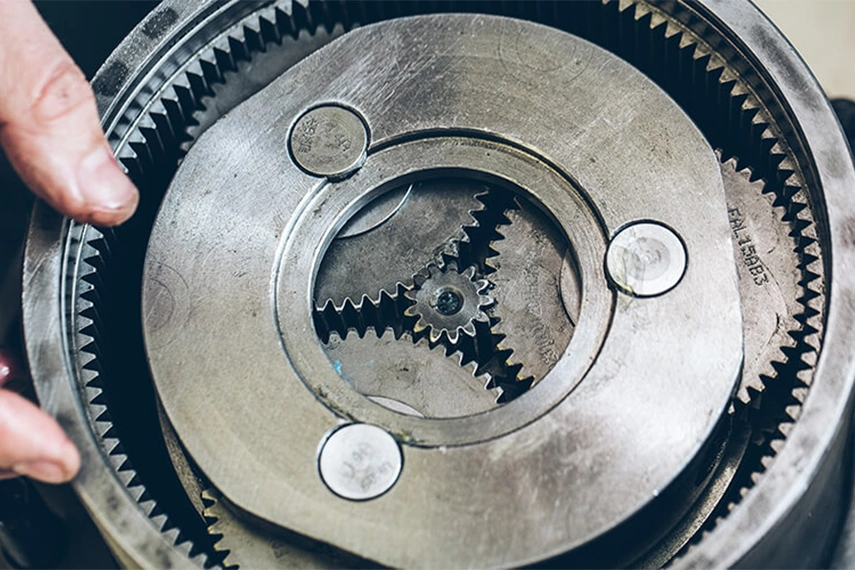
Difference Between Single Phase and Three Phase Induction Motor
Single-phase and three-phase motors differ in their working principles, structure, applications, and advantages.
Induction motors are an indispensable and important part of industrial production and commercial activities. According to the power supply type, induction motors can be divided into single-phase induction motors and three-phase induction motors. This article delves into the detailed differences between single-phase and three-phase induction motors, exploring their working principles, construction, applications, advantages, and disadvantages.

Introduction to Induction Motors
Induction motors, also known as asynchronous motors, operate based on the principle of electromagnetic induction. The motor consists of a stator, which creates a rotating magnetic field, and a rotor, which follows this field, producing torque. The absence of brushes and commutators in induction motors makes them highly reliable and low-maintenance. The distinction between single-phase and three-phase induction motors lies in the power supply they use and their corresponding design and performance characteristics. While both types share the same fundamental working principle, their differences in construction, performance, and applications are significant.
Single-Phase Induction Motor
Construction and Operation
A single-phase induction motor operates on a single-phase AC supply. The stator of a single-phase motor has a single winding, which creates a pulsating magnetic field when an AC voltage is applied. However, a pulsating magnetic field alone is insufficient to start the rotor; hence, additional methods are employed to create a rotating magnetic field necessary for motor operation.
To achieve this, single-phase motors often use auxiliary windings and starting mechanisms such as capacitors or shaded poles. These methods help produce a phase shift that creates a rotating magnetic field, allowing the rotor to start and continue running.
Advantages
- Simplicity: Single-phase induction motors have a simpler design compared to three-phase motors, making them easier to manufacture and maintain.
- Lower Cost: Due to their simpler construction, single-phase motors are generally less expensive.
- Availability: Single-phase power supply is more common in residential and light commercial settings, making these motors ideal for such environments.
Disadvantages
- Lower Efficiency: Single-phase motors are less efficient compared to three-phase motors because of the pulsating nature of their magnetic field, leading to higher energy consumption for the same output.
- Starting Torque: The starting torque of single-phase motors is lower, which can limit their use in applications requiring high initial torque.
- Vibration and Noise: Single-phase motors tend to produce more vibration and noise due to the uneven torque generated by the pulsating magnetic field.
Applications
Single-phase induction motors are predominantly used in residential and light commercial applications where only a single-phase power supply is available. Common applications include ceiling fans, refrigerators, washing machines, air conditioners, and small pumps.
Three-Phase Induction Motor
Construction and Operation
A three-phase induction motor operates on a three-phase AC power supply. The stator of a three-phase motor consists of three windings spaced 120 degrees apart, each connected to one of the three phases of the power supply. When the three-phase voltage is applied, it creates a rotating magnetic field in the stator, which induces a current in the rotor, causing it to rotate.
The key advantage of the three-phase system is that it naturally produces a rotating magnetic field without the need for additional components like capacitors or shaded poles. This results in more efficient operation and higher performance.
Advantages
- High Efficiency: Three-phase motors are more efficient than single-phase motors due to the continuous and balanced nature of the rotating magnetic field, which reduces energy losses.
- Higher Starting Torque: These motors provide higher starting torque, making them suitable for heavy-duty applications.
- Smooth Operation: The even distribution of power across three phases leads to smoother operation with less vibration and noise.
- Lower Operating Costs: The higher efficiency and lower energy consumption result in reduced operating costs over time.
Disadvantages
- Complexity: Three-phase motors have a more complex design and require a three-phase power supply, which is not as commonly available in residential settings.
- Higher Initial Cost: The construction and installation costs are higher compared to single-phase motors due to the need for a three-phase power supply and more complex control systems.
Applications
Three-phase induction motors are used in industrial and heavy commercial applications where high power and efficiency are required. Common applications include conveyors, compressors, large pumps, HVAC systems, and industrial machinery.
Key Differences Between Single-Phase and Three-Phase Induction Motors
- Power Supply
- Single-Phase Motors: Operate on a single-phase AC power supply, typically found in residential and light commercial environments.
- Three-Phase Motors: Operate on a three-phase AC power supply, commonly used in industrial and large commercial settings.
- Construction
- Single-Phase Motors: Have a single stator winding and require additional components like capacitors to create a rotating magnetic field.
- Three-Phase Motors: Have three stator windings spaced 120 degrees apart, naturally producing a rotating magnetic field.
- Efficiency
- Single-Phase Motors: Generally less efficient due to the pulsating magnetic field and higher energy losses.
- Three-Phase Motors: More efficient due to the continuous and balanced rotating magnetic field.
- Starting Torque
- Single-Phase Motors: Provide lower starting torque, making them less suitable for high-torque applications.
- Three-Phase Motors: Offer higher starting torque, suitable for heavy-duty and industrial applications.
- Applications
- Single-Phase Motors: Used in household appliances and light commercial applications where single-phase power is available.
- Three-Phase Motors: Used in industrial machinery, heavy-duty equipment, and large commercial systems requiring high power and efficiency.
Conclusion
Understanding the difference between single-phase and three-phase motors is crucial for selecting the right motor for a specific application, as these two types of motors have different advantages and are suitable for different applications. You can choose the appropriate motor based on your specific requirements.



Leave a Comment